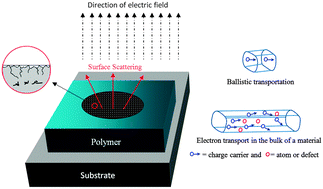Is ballistic transportation or quantum confinement responsible for changes in the electrical properties of thin polymer films?†
Abstract
Resistivities of thin

Maintenance work is planned on Thursday 2nd October 2025 from 09:00 to 10:00 BST.
During this time the performance of our website may be affected - searches may run slowly, some pages may be temporarily unavailable, and you may be unable to log in or to access content. If this happens, please try refreshing your web browser or try waiting two to three minutes before trying again.
We apologise for any inconvenience caused and thank you for your patience.
* Corresponding authors
a Department of Chemistry, Curtin University, GPO Box U1987, Perth, Western Australia 6109, Australia
b Bragg Institute, Australian Nuclear Science and Technology Organisation, Locked Bag 2001, Kirrawee DC, Australia
c School of Chemistry, University of New South Wales, Kensington, New South Wales 2052, Australia
d Faculty of Science, Health, Education and Engineering, University of the Sunshine Coast, 90 Sippy Downs Drive, Sippy Downs, Queensland 4556, Australia
Resistivities of thin

 Please wait while we load your content...
Something went wrong. Try again?
Please wait while we load your content...
Something went wrong. Try again?
J. Veder, K. Patel, J. Lee, M. Tanzirul Alam, M. James, A. Nelson and R. De Marco, Phys. Chem. Chem. Phys., 2013, 15, 1364 DOI: 10.1039/C2CP43333H
To request permission to reproduce material from this article, please go to the Copyright Clearance Center request page.
If you are an author contributing to an RSC publication, you do not need to request permission provided correct acknowledgement is given.
If you are the author of this article, you do not need to request permission to reproduce figures and diagrams provided correct acknowledgement is given. If you want to reproduce the whole article in a third-party publication (excluding your thesis/dissertation for which permission is not required) please go to the Copyright Clearance Center request page.
Read more about how to correctly acknowledge RSC content.
 Fetching data from CrossRef.
Fetching data from CrossRef.
This may take some time to load.
Loading related content
